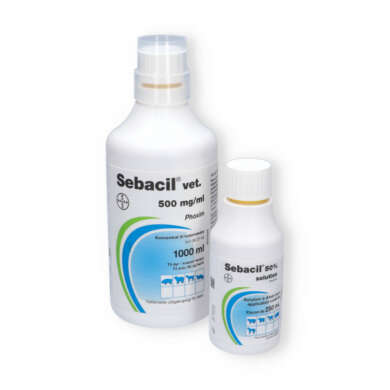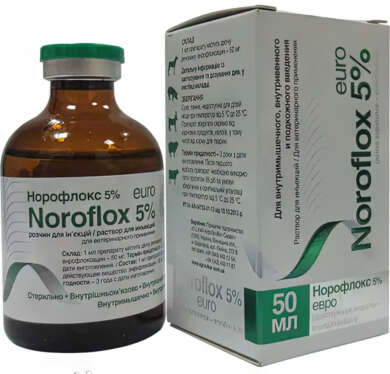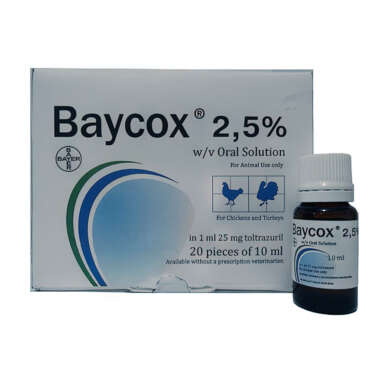Description
Buy Fortum Ceftazidime 2 g for injection
Description of Fortum Ceftazidime 2 g for injection:
Ceftazidime is a bactericidal cephalosporin antibiotic, the mechanism of action of which is associated with a violation of the synthesis of bacterial cell walls.
Acquired resistance to antibiotics varies from region to region and may change over time, and may differ significantly for individual strains. It is desirable to use local (local) data on antibiotic susceptibility and data on the distribution of microorganisms that produce extended-spectrum beta-lactamase, especially in the treatment of severe infections.
Ingredients:
1 vial contains ceftazidime (in the form of ceftazidime pentahydrate) 2 g;
excipient: sodium anhydrous carbonate.
Pharmacologic effect of Fortum Ceftazidime 2 g for injection:
Pharmacodynamics.
Ceftazidime is a bactericidal cephalosporin antibiotic, the mechanism of action of which is associated with a violation of the synthesis of bacterial cell walls.
Acquired resistance to antibiotics varies from region to region and may change over time, and may differ significantly for individual strains. It is desirable to use local (local) data on antibiotic susceptibility and data on the distribution of microorganisms that produce extended-spectrum beta-lactamase, especially in the treatment of severe infections.
Sensitive microorganisms
- Gram-positive aerobes: Staphylococcus aureus, Staphylococcus pneumonia, Viridans group streptococcus.;
- Gram-negative aerobes: Fusobacterium spp.
Strains with possible acquired resistance
- Gram-negative aerobes: Acinetobacter baumannii, Burkholderia cepacia, Citrobacter freundii, Enterobacter aerogenes, Enterobacter cloacae, Escherichia coli, Klebsiella pneumoniae, Klebsiella spp., Bacteroides spp., B. fragilis, Pseudomonas aer.
- Gram-positive aerobes: Enterococcus spp., E. faecalis та E. faecium, Listeria spp
Non-susceptible microorganisms
Gram-positive aerobes: Enterococcus spp., including E. faecalis and E. faecium, Listeria spp., Clostridium difficile;
Gram-negative anaerobes: Bacteroides spp., including B. fragilis.
Others:
Chlamydia spp., Mycoplasma spp., Legionella spp
Pharmacokinetics of Fortum Ceftazidime 2 g for injection:
Suction
Absorption. Amoxicillin and clavulanic acid completely dissociate in aqueous solution at physiological pH. Both components are rapidly and well absorbed when taken orally. The bioavailability of amoxicillin and clavulanic acid is about 70% when taken orally. The plasma profiles of both components are identical, and the time to reach maximum plasma concentration (Tmax) for each component is approximately one hour.
Serum concentrations of amoxicillin and clavulanic acid achieved with the amoxicillin/clavulanic acid combination are identical to those achieved with oral administration of equivalent doses of amoxicillin or clavulanic acid alone.
Distribution. About 25% of the total clavulanic acid in plasma and 18% of the total amoxicillin in plasma are protein bound. The volume of distribution is about 0.3–0.4 L/kg for amoxicillin and about 0.2 L/kg for clavulanic acid.
Following intravenous administration, amoxicillin and clavulanic acid have been found in the gallbladder, peritoneum, skin, adipose tissue, muscle tissue, synovial and peritoneal fluid, bile, and pus. Amoxicillin is not distributed sufficiently in the cerebrospinal fluid.
Animal studies have not revealed any evidence of significant retention of substances derived from any component of the drug in body tissues. Amoxicillin, like most penicillins, can be found in breast milk. A small amount of clavulanic acid can also be found in breast milk.
Both amoxicillin and clavulanic acid have been found to cross the placental barrier.
Biotransformation. Amoxicillin is partially excreted in the urine as inactive penicilloid acid in amounts equivalent to 10-25% of the initial dose. Clavulanic acid is largely metabolized in the human body and excreted in urine and feces and as carbon dioxide in exhaled air.
Withdrawal. The main route of excretion of amoxicillin is the kidneys, while clavulanic acid is excreted both by the kidneys and by the action of extrarenal mechanisms.
In healthy volunteers, the mean half-life of amoxicillin/clavulanic acid is approximately one hour and the mean total clearance is approximately 25 L/h. Various studies have shown that urinary excretion is 50-85% for amoxicillin and 27-60% for clavulanic acid over a 24-hour period. The greatest amount of clavulanic acid is excreted during the first 2 hours after ingestion.
The simultaneous use of probenecid slows down the excretion of amoxicillin, but does not delay the renal excretion of clavulanic acid.
Age. The half-life of amoxicillin is identical for children 3 months to 2 years of age, older children and adults. Since elderly patients are more prone to decreased renal function, dosage should be selected with caution, and monitoring of renal function is also recommended.
Impaired kidney function. The total serum clearance of amoxicillin / clavulanic acid decreases proportionally with a decrease in renal function. The decrease in drug clearance is more pronounced for amoxicillin than for clavulanic acid, since most of the amoxicillin is excreted by the kidneys. In renal insufficiency, the dosage should prevent excessive accumulation of amoxicillin while maintaining sufficient levels of clavulanic acid.
Impaired liver function. Patients with hepatic insufficiency are advised to carefully use the drug and regularly monitor liver function.
Indications for use of Fortum Ceftazidime 2 g for injection:
Treatment of the following infections in adults and children, including newborns:
- nosocomial pneumonia;
- respiratory tract infections in patients with cystic fibrosis;
- bacterial meningitis;
- chronic otitis media;
- malignant external otitis;
- complicated urinary tract infections;
- complicated infections of the skin and soft tissues;
- complicated infections of the abdominal cavity;
- bone and joint infections;
- peritonitis associated with dialysis in patients on continuous ambulatory peritoneal dialysis.
Treatment of bacteremia occurring in patients as a result of any of the above infections.
Ceftazidime can be used to treat patients with neutropenia and fever resulting from a bacterial infection.
Ceftazidime can be used to prevent urinary tract infections during prostate surgery (transurethral resection).
When prescribing ceftazidime, one should take into account its antibacterial spectrum, which is directed mainly against gram-negative aerobes.
Ceftazidime should be used with other antibacterial agents if it is expected that a number of organisms causing the infection do not fall within the spectrum of action of ceftazidime.
Prescribe the drug should be in accordance with the existing official recommendations for the appointment of antibacterial agents.
Contraindications for use Fortum Ceftazidime 2 g for injection:
Hypersensitivity to ceftazidime or other components of the drug.
Hypersensitivity to cephalosporin antibiotics.
History of severe hypersensitivity (eg, anaphylactic reactions) to other beta-lactam antibiotics (penicillins, monobactams, and carbapenems).
Precautions:
As with other beta-lactam antibiotics, severe and sometimes fatal hypersensitivity reactions have been reported. In severe hypersensitivity reactions, treatment with ceftazidime should be stopped immediately and appropriate urgent measures taken.
Before starting treatment, the patient should be determined for a history of severe hypersensitivity reactions to ceftazidime, cephalosporin antibiotics, or other beta-lactam antibiotics. Use with caution in patients who have had mild hypersensitivity reactions to other beta-lactam antibiotics.
Ceftazidime has a limited spectrum of antibacterial activity. It is not an acceptable agent for the monotherapy of certain types of infections unless the causative agent is known to be susceptible to treatment or there is a strong possibility that the potential pathogen will be susceptible to treatment with ceftazidime. This is especially important when considering the treatment of patients with bacteremia, bacterial meningitis, skin and soft tissue infections, and bone and joint infections. In addition, ceftazidime is susceptible to hydrolysis by some extended-spectrum beta-lactamases. Therefore, when choosing ceftazidime for treatment, information on the spread of microorganisms producing extended-spectrum beta-lactamases should be taken into account.
Concomitant treatment with high doses of cephalosporins and nephrotoxic drugs such as aminoglycosides or potent diuretics (eg furosemide) may adversely affect renal function. Experience with the clinical use of ceftazidime has shown that this phenomenon is unlikely when the recommended dosage is observed. There is no evidence that ceftazidime has an adverse effect on renal function at usual therapeutic doses.
Ceftazidime is excreted by the kidneys, so the dose should be reduced according to the degree of kidney damage. Cases of neurological complications have been reported when the dose has not been reduced accordingly (see section.
As with other broad-spectrum antibiotics, prolonged treatment with Fortum may result in overgrowth of non-susceptible organisms (eg, Candida, Enterococci); in this case, it may be necessary to stop treatment or take other necessary measures. It is very important to constantly monitor the patient’s condition.
Interactions:
Simultaneous use of allopurinol in the treatment of amoxicillin increases the likelihood of allergic reactions from the skin.
Oral anticoagulants: Oral anticoagulants and penicillin antibiotics are widely used in practice without interaction reports. However, cases of an increase in the international coefficient of normalization in patients taking acenocoumarol or warfarin, and who were prescribed a course of treatment with amoxicillin, have been described.
Methotrexate: Penicillins can reduce the excretion of methotrexate, which causes a potential increase in toxicity.
Probenecid: Co-administration of probenecid is not recommended. Probenecid reduces the renal tubular secretion of amoxicillin. Simultaneous use of probenecid may lead to an increase in the level and duration of amoxicillin (but not clavulanic acid) in the blood.
Mycophenolate mofetil: In patients treated with mycophenolate mofetil, after initiation of oral amoxicillin with clavulanic acid, the predose concentration of the active metabolite, mycophenolic acid, may decrease by approximately 50%. This change in pre-dose level may be consistent with the change in total exposure to mycophenolic acid. Thus, a change in the dosage of mycophenolate mofetil is usually not required unless there is clinical evidence of graft dysfunction. However, close monitoring is necessary during concomitant use and for some time after antibiotic therapy.
Side effects:
Side effects were classified according to the frequency of their occurrence – from very frequent to infrequent, as well as by organs and systems: very often and 1/10; often ³ 1/100 and < 1/10; infrequently ³ 1/1000 and < 1/100; rarely ³ 1/10000 and < 1/1000; very rarely <1/10000; frequency is unknown.
Infections and infestations
Infrequently, candidiasis (including vaginitis and candidiasis stomatitis).
circulatory and lymphatic systems.
Often – eosinophilia and thrombocytosis.
Infrequently – leukopenia, neutropenia and thrombocytopenia.
Frequency unknown – lymphocytosis, hemolytic anemia and agranulocytosis.
The immune system
Frequency unknown – anaphylaxis (including bronchospasm and / or arterial hypotension).
Nervous system
Infrequently – dizziness, headaches.
Frequency unknown – paresthesia.
Cases of neurological complications such as tremor, myoclonus, convulsions, encephalopathy and coma have been reported in patients with renal insufficiency for whom the dose of ceftazidime has not been reduced accordingly.
Vascular disorders
Often – phlebitis or thrombophlebitis at the injection site.
Gastrointestinal disorders
Often – diarrhea.
Infrequently – nausea, vomiting, abdominal pain and colitis.
As with the use of other cephalosporins, colitis may be associated with Clostridium difficile and may manifest as pseudomembranous colitis (see “Peculiarities of use”).
Frequency unknown – taste disturbance.
Urinary system
Infrequently – a transient increase in the level of urea in the blood.
Very rarely – interstitial nephritis, acute renal failure.
Hepatobiliary reactions
Often – a transient increase in the level of one or more liver enzymes (ALT, AST, LDH, GGT, alkaline phosphatase).
Frequency unknown – jaundice.
Skin and subcutaneous tissues
Often – maculopapular rash or urticaria.
Infrequently – itching.
Frequency unknown – angioedema, erythema multiforme, Stevens-Johnson syndrome and toxic epidermal necrolysis.
General reactions and disorders at the injection site
Often – pain and / or inflammation at the site of intramuscular injection.
Infrequently – fever.
Laboratory indicators
Often a positive Coombs test.
Infrequently – as with the use of other cephalosporins, a transient increase in the level of blood urea, blood urea nitrogen and / or creatinine in the blood serum was sometimes observed.
A positive Coombs reaction is observed in approximately 5% of patients, which may have an impact on blood typing.
Overdose of Fortum Ceftazidime 2 g for injection:
Overdose can lead to neurological complications such as encephalopathy, seizures and coma. Symptoms of an overdose may occur in patients with renal insufficiency, if the dose is not reduced for them accordingly. Serum concentrations of ceftazidime can be reduced by hemodialysis or peritoneal dialysis.
Storage:
Store below 25°C in original packaging. Keep out of the reach of children.
Shelf life:
3 years.





Reviews
There are no reviews yet.